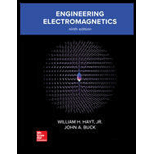
Concept explainers
A two-element dipole array is configured to provide zero radiation in the broadside
Want to see the full answer?
Check out a sample textbook solution
Chapter 14 Solutions
Engineering Electromagnetics
- 1. A 4-element dipole array has element spacing of 2/2. The elements are excited by sources with the same magnitude but different phases as show in the figure below (y=0°). Assume the phase of element 1 to be zero. Sketch the resulting radiation pattern in the xy-plane using the graphical method. (hint: u = kodsin esind+ y where 0= 90° in xy plane.) 1 20° 2 Top View 3 4 مر 23 220 مردےarrow_forwardCalculate the First Null Beamwidth and the gain of a parabolic reflector antenna. The diameter of the reflector is 5m and the antenna is transmitting at 100 MHz.arrow_forwardCalculate the length in meter of a half-wave dipole for an operating frequency of 20 MHz assuming a velocity factor of 0.95.arrow_forward
- A- Calculate the incidence angle for the beam radiation on horizontal surface at 9:00 am (solar time) on 1 Dec and the location attitude is 28 ° N. Note: consider the hour angle is: 15 (12 - ST)arrow_forward2.) A short vertical transmitting antenna erected on the surface of a perfectly conducting earth produce an rms field strength E = 100 sine mV/m at a distance of 0.5 km from the antenna. Determine the total radiated power by the antenna.arrow_forwardThe total dipole moment may reach a significant magnitude as a result of random .orientation True Falsearrow_forward
- 3- The half wave dipole is widely used in more applications compared to other linear antenna lengths, that is because a) It has high gain d) it has small size b) its easy matching to coaxial 75 Ohm cable c) low lossarrow_forward3. Write down the total electric field E and magnetic field of a dipole antenna and prove that the near fields do not radiate P = -Re(ExH) = 0 Rarrow_forwardA short vertical grounded antenna is designed to radiate at 10 MHz. Calculate the radiation resistance of the antenna of the effective height is 50 meters.arrow_forward
- Calculate the beamwidth in degrees of a parabolic antenna with a diameter of 3 meters, an efficiency of 60% and operates at a frequency of 4GHzarrow_forwardEstimate the free space path loss between two radiating sources of the distance between the two sources is 155 kms and the frequency of operation is 490 kHz.arrow_forward2- Directivity is inversely proportional to...... (A) Beamwidth (B) FNBW (C) Beam area (D) HPBW Z so reflection coefficient is 12 4- What determines antenna polarization? (A) The direction of the electric field vector (B) The direction of the radiated wave (C) The direction of the magnetic field vector (D) The frequency of the radiated wave 5- Antennas convert -to- (A) Electrical into electromagnetic (B) electromagnetic into electrical (C) Both A and B (D) None of the thesearrow_forward
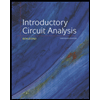 Introductory Circuit Analysis (13th Edition)Electrical EngineeringISBN:9780133923605Author:Robert L. BoylestadPublisher:PEARSON
Introductory Circuit Analysis (13th Edition)Electrical EngineeringISBN:9780133923605Author:Robert L. BoylestadPublisher:PEARSON Delmar's Standard Textbook Of ElectricityElectrical EngineeringISBN:9781337900348Author:Stephen L. HermanPublisher:Cengage Learning
Delmar's Standard Textbook Of ElectricityElectrical EngineeringISBN:9781337900348Author:Stephen L. HermanPublisher:Cengage Learning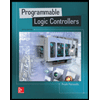 Programmable Logic ControllersElectrical EngineeringISBN:9780073373843Author:Frank D. PetruzellaPublisher:McGraw-Hill Education
Programmable Logic ControllersElectrical EngineeringISBN:9780073373843Author:Frank D. PetruzellaPublisher:McGraw-Hill Education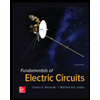 Fundamentals of Electric CircuitsElectrical EngineeringISBN:9780078028229Author:Charles K Alexander, Matthew SadikuPublisher:McGraw-Hill Education
Fundamentals of Electric CircuitsElectrical EngineeringISBN:9780078028229Author:Charles K Alexander, Matthew SadikuPublisher:McGraw-Hill Education Electric Circuits. (11th Edition)Electrical EngineeringISBN:9780134746968Author:James W. Nilsson, Susan RiedelPublisher:PEARSON
Electric Circuits. (11th Edition)Electrical EngineeringISBN:9780134746968Author:James W. Nilsson, Susan RiedelPublisher:PEARSON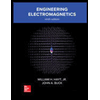 Engineering ElectromagneticsElectrical EngineeringISBN:9780078028151Author:Hayt, William H. (william Hart), Jr, BUCK, John A.Publisher:Mcgraw-hill Education,
Engineering ElectromagneticsElectrical EngineeringISBN:9780078028151Author:Hayt, William H. (william Hart), Jr, BUCK, John A.Publisher:Mcgraw-hill Education,





